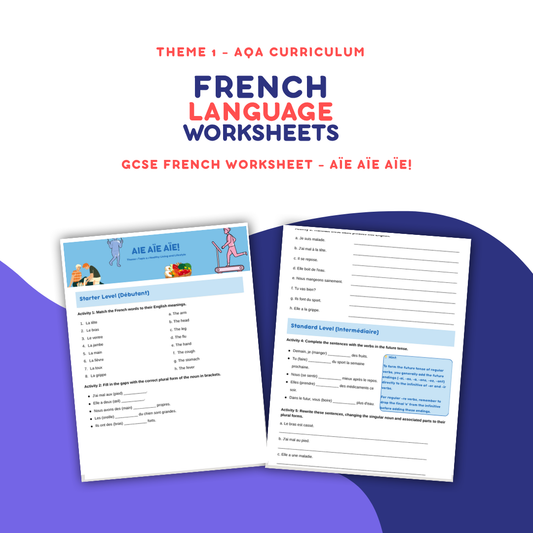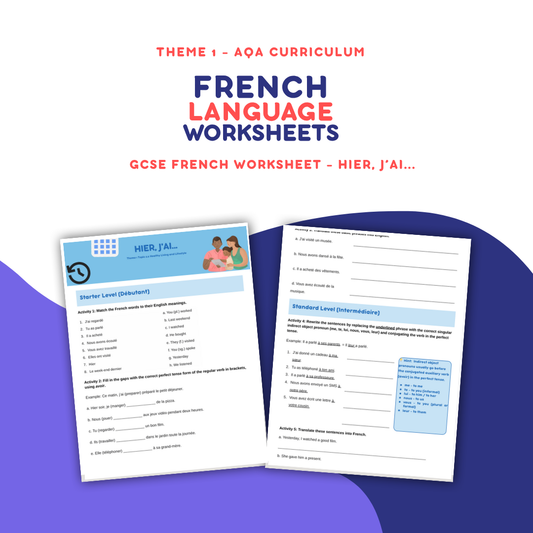Best French Worksheets for Home Practice
Learning French at home can be easy with the right tools. French worksheets provide structured practice for vocabulary, grammar, listening, and reading comprehension. This article explores the best types of French worksheets, how to use them effectively, and where to find high-quality resources for different age groups and learning goals.
Why Use French Worksheets for Home Learning?
French worksheets offer guided repetition. They help learners build a strong foundation in grammar and vocabulary. According to research published by the University of Cambridge Language Centre, repetitive written tasks improve language retention by 68% compared to passive reading.
In addition, worksheets support independent learning. Students work through exercises at their own pace. This flexibility benefits both children and adult learners.
What Types of French Worksheets Are Most Effective?
The most effective worksheets include:
- Grammar Practice Sheets – These focus on verb conjugations, sentence structure, and gender agreement. Example: worksheets on "le passé composé" with 20+ exercises.
- Vocabulary Worksheets – These include themed word banks and matching tasks. Topics range from daily routines to travel and food.
- Reading Comprehension Passages – Learners read short stories and answer questions. These worksheets test understanding while introducing new sentence patterns.
- Listening Worksheets – These are paired with audio clips. Students fill in blanks or answer questions while listening.
- Interactive Worksheets – These combine writing with games, puzzles, or drawing. They work well for visual and kinesthetic learners.
According to a 2021 meta-analysis in the Modern Language Journal, learners using mixed-method worksheets (reading + listening) retained 33% more vocabulary than those using single-mode resources.
How Can You Use French Worksheets at Home Effectively?
To maximise learning:
- Set a Daily Practice Routine – Complete one worksheet per day focusing on a different skill.
- Track Progress – Keep a folder to compare early and recent work.
- Combine With Speaking Practice – Read answers aloud to reinforce pronunciation.
- Use Worksheets in Thematic Units – For example, focus on travel-related worksheets for one week, then shift to food or hobbies.
A study from McGill University’s Department of Education showed students who followed thematic worksheet schedules improved their grammar test scores by 41% within 10 weeks.
Are There Worksheets for Specific Levels or Ages?
Yes. Most resources categorise worksheets by CEFR level or school grade:
- Preschool (Ages 3–5): Coloring, counting, and matching.
- Primary (Ages 6–11): Basic sentence formation, vocab games.
- Secondary (Ages 12–17): Grammar drills, paragraph writing, comprehension.
- Adults: Real-life dialogues, verb tables, and listening exercises.
Which French Worksheets Are Best for Beginners?
For absolute beginners, start with:
- Alphabet and phonics sheets.
- Basic greetings and introductions.
- Number and color vocabulary.
- Conjugation drills for "être" and "avoir".
Look for visually engaging worksheets that include pictures and short instructions.
Can Worksheets Replace a French Teacher?
Worksheets enhance learning, but they do not replace interaction. They provide practice but not real-time feedback. For best results, combine worksheets with online classes or speaking sessions.
Which Worksheets Should You Try First?
Start with grammar and vocabulary worksheets that match your level. Use listening and reading comprehension tasks to build fluency.
French worksheets offer flexible, structured practice that supports long-term retention. Whether you’re homeschooling or self-studying, consistent worksheet use helps you stay on track.
Check out our resources to get you started.




